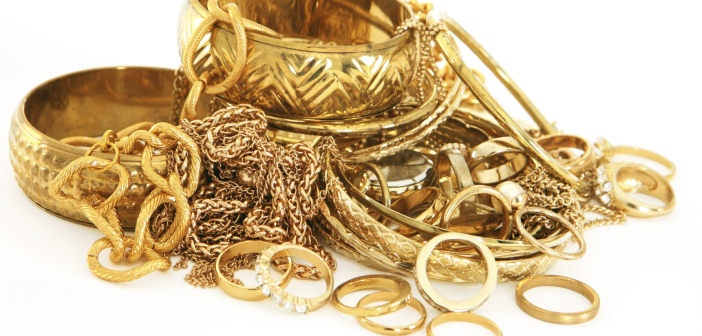The decision to sell gold bars, coins or jewelry immediately raises the question of exactly how you should go about doing that. What’s the process? What kind of return should you expect, and how do you get the best one possible? Should you sell at a friend’s gold party, to a local a jeweler or through the mail?
Wow! Who knew there was so much to think about, and what in the world should you do first?
Smart sellers start by doing their homework. First, familiarize yourself with the gold-selling business, product-wise, weight-wise and karat-wise.
- Product-wise, you need to understand how gold is bought and sold. Coins and bars are dealt intact, while jewelry can either be exchanged intact—this is typically true for designer or vintage pieces—or, most commonly, for scrap. You also need to understand that, generally speaking, you can expect to receive 90-95% of market value for bars and coins and 70-80% melt value for jewelry.
- Weight-wise, you should know the difference between a U.S. ounce (28 grams) and the Troy ounce (31.1 grams) or pennyweight (1.555 grams) most reputable buyers use.
- Karat-wise, you’ll want a good grasp of the difference between 14K and 24K. A 14K piece contains 14 parts gold to 10 parts other metals. In other words, it’s about 58.5% pure gold. A gold bar, on the other hand, is 24K, or about 99.99% pure gold.
Once you master these basics and can at least speak the lingo, it’s time to get your stuff appraised. Because, let’s face it, no matter how carefully you do your homework, nothing beats a professional opinion. You want to put yourself in the best possible position to negotiate, right? To know a reasonable offer when you see one? Then pay a visit to your local jeweler or coin shop and get an appraisal, in writing. You’re going to need that document later.
While you’re getting your appraisal, ask which jewelry pieces, if any, should be sold intact. Check on the current price of gold, too, then stay on top of it—either with follow-up phone calls to the jeweler, or through sites like GoldPrice (recommended by sources like ABC News)—until your deal is done.
And now it’s time to deal. The question is, with whom? Granted, your BFF’s gold party promises to be the convenient, laugh-a-minute option, but will it be the most profitable? You won’t know one way or the other until you shop around.
The list of gold buyers is well nigh endless, ranging from local buyers in physical shops to home parties to web-based buyers-by-mail. Identify the ones that interest you, then check them out with the Better Business Bureau.
Ask buyers who get the BBB all-clear a few pertinent questions. How many days will you have to accept or refuse their offer? (You should always have some time to consider). How long will you have to wait for payment, and how will you be paid? What recourse will you have if you don’t get paid by then?
Since your local jeweler or neighborhood gold party will most likely pay off on the spot, those pertinent questions are most ask-worthy when you deal at a distance. We talked with Pro Coin & Bullion Exchange about this topic and they said, “If you get the right answers from a business-by-mail buyer and decide to go that way, be smart about it. Take photos of everything before you send off anything. Include a cover letter detailing the official appraisal for the items enclosed. Finally, insure the package and entrust it to a carrier that tracks delivery and receipt.”
Bottom line, gold exchange isn’t difficult. With a little knowledge and the right resources, you can navigate the process to a fair pay off.




